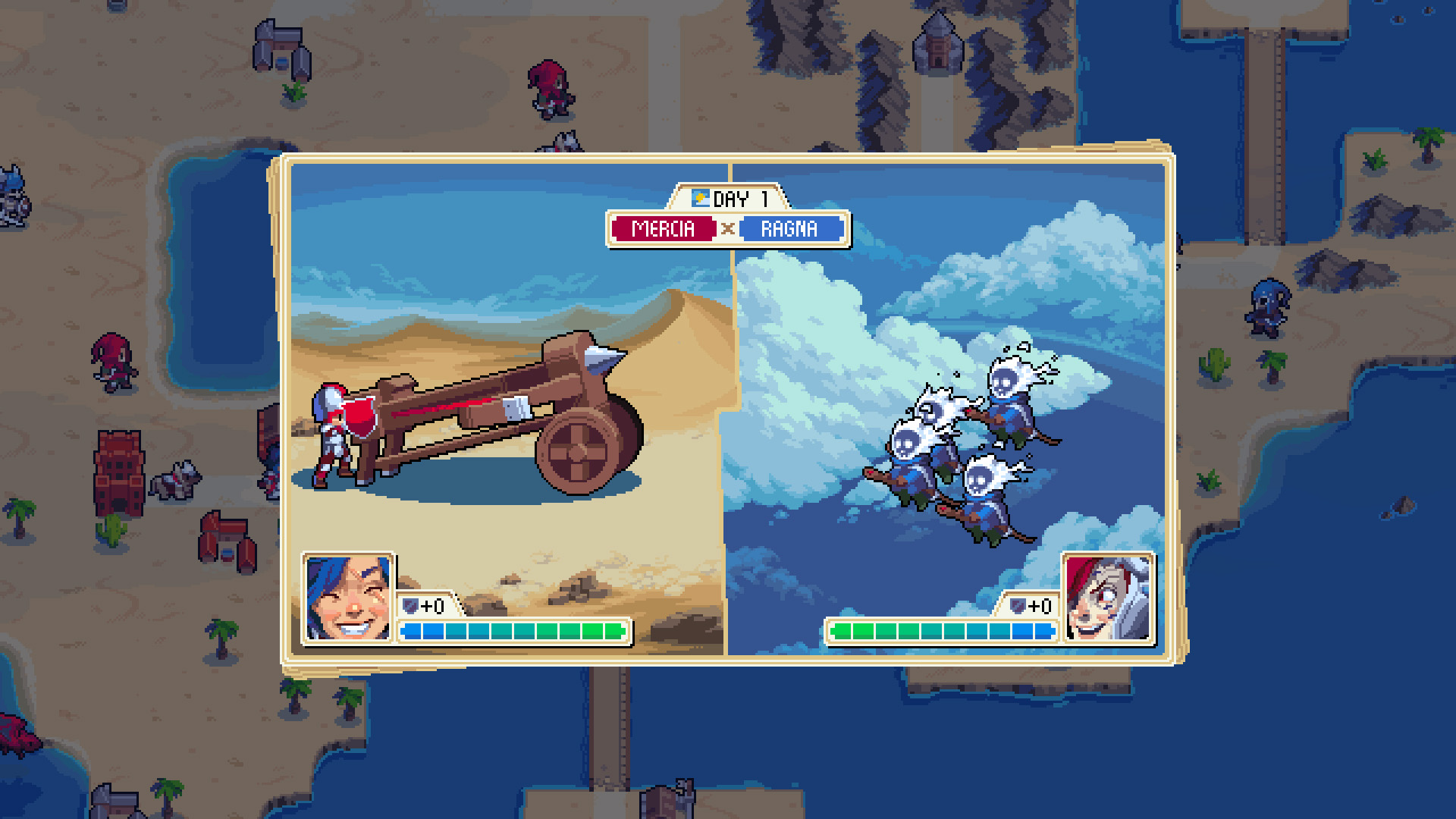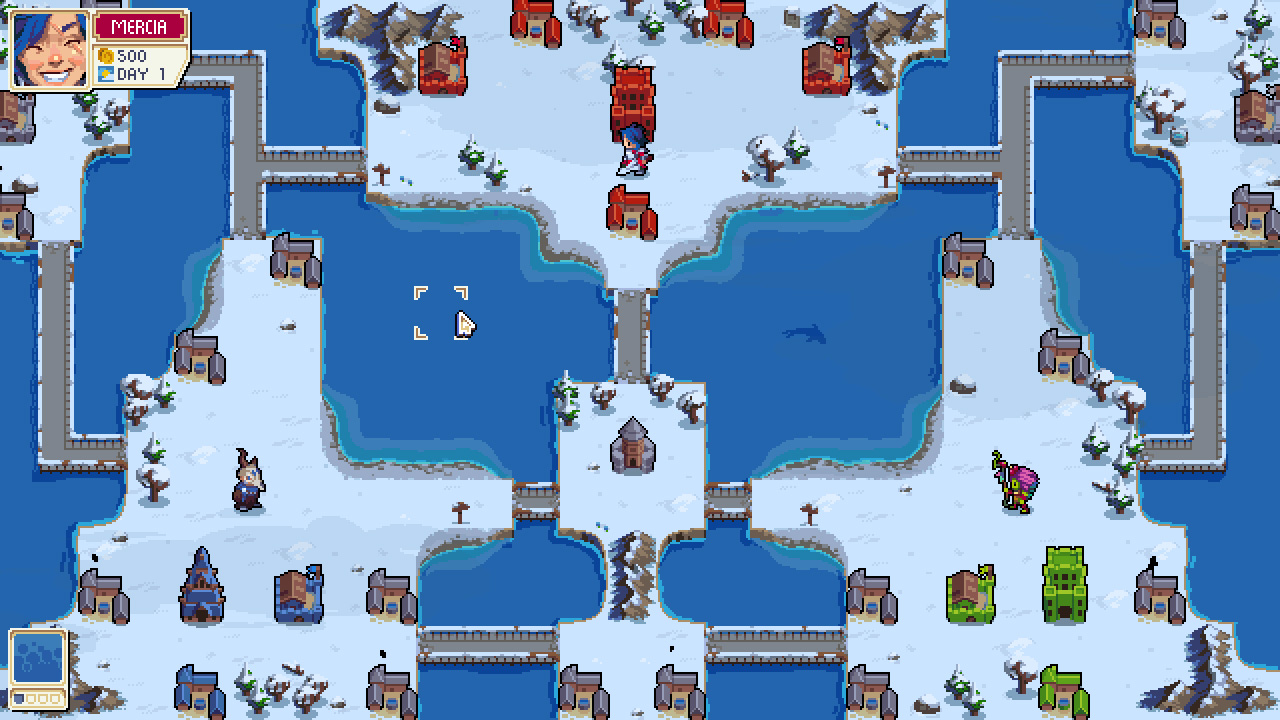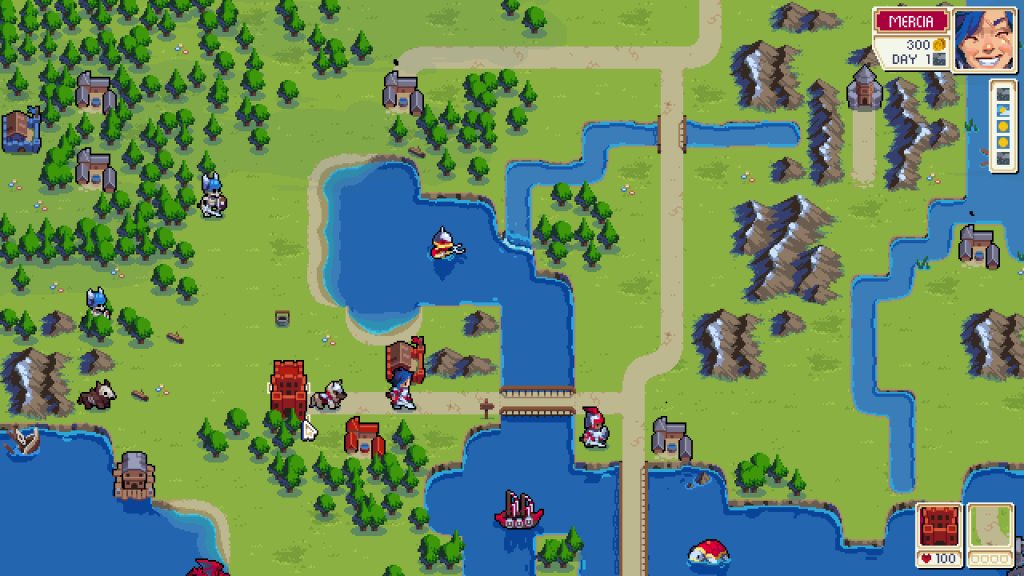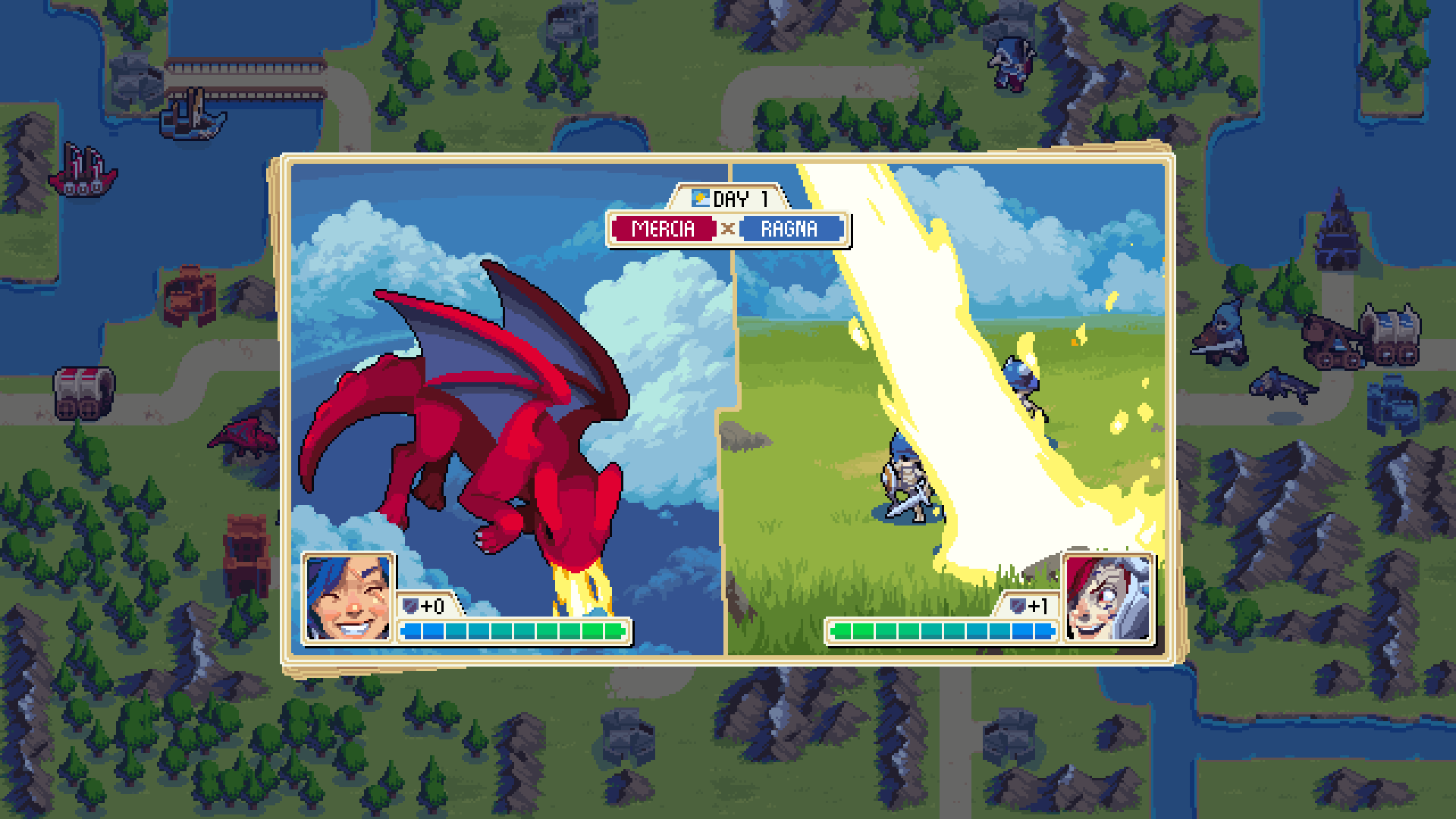Wargroove is a fiercely competitive Advance Wars successor
Our impressions of Chucklefish's turn-based game after two couch-based PvP rounds.

I expected a 1v1 match of Wargroove to last about 15 minutes when I visited Chucklefish's office two weeks ago. It turns out it takes 40-60 minutes, if you're anything like me. I found myself spending far too much time fretting about exactly where to move a unit, or whether to buy an archer at that moment rather than saving my money for the stronger and faster knight during the next turn.
Such caution isn't unwarranted in this turn-based, grid-based strategy game, though. The deeper you get into a multiplayer game, the more you worry about pushing a unit one square too far. You might be putting a knight in range of a trebuchet, or an archer. By hovering over an enemy unit during your turn, you can see their possible movement range, allowing you to plan ahead as much as possible.
Your goal in Wargroove is to kill the opponent's commander, or take over their base. Either will trigger a victory. Across the map, there are buildings that act as resource points. The more you control, the more gold you have coming in per turn. Capturing an enemy building requires you killing the guard unit inside first. Though each of the game's factions have unique commander units, they otherwise have an identical selection of units, aside from the way they look.

I start my first game by deploying a swordsman, and later, a couple of spearmen, at the top of the map. My opponent is moving up from the south. When positioned next to each other on the map, spearmen will perform a critical hit, meaning there's some benefit to building a little wall of them. While I'm getting used to the unit creation and movement, my opponent has occupied a load of buildings and suddenly has loads more money coming in than I do. Over the next few turns, fast, flying vampire units and a massive golem enter the fray and take out my comparably pathetic spearmen and swordsmen. It's over, and my commander, Mercia, is killed. It's all over, lads.
The flying units are particularly tough to deal with—their counter is an alchemist, since melee ground units are useless against them, but it takes me a bit too long to get one onto the field due to my slow gold funds. This nonetheless feels like a good crash course for how much is going on in a game of Wargroove, and how fiercely competitive it is.
That's my way of saying I got my arse handed to me, basically. But the next game won't be nearly as brutal.
Let's try that again
This match will be a little easier. For one, Chucklefish picks a map that doesn't have water or the ability to summon flying units, making it a little simpler to grasp in terms of pacing and counters, without yet knowing the minutiae of every unit off by heart. It's basically just a desert-y field, with my base on the left, and my opponent's on the right. We grab half the buildings each, and the fight converges in the central lane.
The biggest gaming news, reviews and hardware deals
Keep up to date with the most important stories and the best deals, as picked by the PC Gamer team.
As I learned from the last match, a couple of spearmen placed closely together are pretty great in the early game. I don't find the basic swordsman units useful for anything other than grabbing buildings, so I focus on pushing spearmen forward instead. They're slow, but they're handy as a kind of moving wall. A few turns later, my opponent drops a golem, which memorably slapped my troops aside during the last game. I'm dreading its arrival as it plods across the map.

I buy a knight unit, the best unit I can afford. They can move five squares at a time, and if they end their turn on the fifth square, they'll land a critical hit. This is how I counter the golem—the knight races in and takes it down to about a quarter of its health, forcing my opponent to withdraw before it's done any real damage.
This is a major victory, since the golem cost 1200 gold. It's a formidable threat in the right circumstances, but when it's thrashed like this, that's a lot gone to waste. "It’s very intimidating, but it’s actually true that most of its powers are symbolic," says marketing manager Molly Carroll. To look at, it's certainly a scary thing marching across the battlefield. "You’re like 'oh, I’m fucked!'"
The push towards victory is exciting: starving your opponent of gold, then building more and more units for the hell of it.
The golem's demise underlines the idea that everything has a counter in Wargroove, and that all units have their own drawbacks. My knight, for example, can't cross mountain range tiles, and nor can it actually take control of a building—it can only kill the enemy units occupying one. Alternatively, the trebuchet, which costs 900 gold, would've been effective against the golem too, but that can't move and shoot in the same turn.
Work in progress
"[The golem] is potentially getting more powerful," Chucklefish founder and director Finn Brice explains. "We’re experimenting with its ability to pick up and throw allied units across the map, but it’s a big balance change, so we have to look into it. But I think it’s the only non-commander unit to have an active ability instead of passive, because it won’t have a [critical attack] to make up for that."
Nothing feels overpowered in this build, though. If anything, some units could do with being more threatening, particularly the commanders. Of the two I sample, one, Mercia, has an active AOE healing power, and another, Valder, has the ability to summon a basic skeleton swordsman unit from the dead, but both abilities take a long time to charge up.
I ended up leaving my commander out of the fight in the second game, because they feel a little too fragile. This is an area where a lot of balancing is going on—working out long it takes for each commander's 'Groove' to charge, and how game-changing that ability will be. "The ultimate goal is to ensure that they all feel immensely powerful and that they affect your game so much that playing with one commander over another requires an entirely different strategy, and I think that’s what’s going to make the game particularly interesting," Brice explains. "[It's] also particularly hard to balance, but we’ll cross that bridge."

"I think the community has come to expect this kind of thing," says programmer Rodrigo Monteiro. "StarCraft was being rebalanced, what, ten years after release? There were still releasing balance patches because the meta of the game adapts, and you have to adapt the game with it."
Right now, most of the non-commander units feel balanced enough. The right set of moves can wipe out every enemy unit on the map in a single turn, which more or less happens twice during my second game on both sides. The push towards my eventual victory is exciting: starving my opponent of gold, then building more and more units for the hell of it. By the end, I'm considering a second trebuchet that I have no need for.
This was a relatively decisive victory, but there's plenty of opportunity to grab a quick victory in Wargroove if someone's left their leader in the wrong place—your entire strategy can unravel in a single turn, but you'll understand why when it happens, and you'll learn. Chucklefish hasn't made a strategy game before, but this shows the team is on the right track to me.
It's turn-based strategy as we know it, but presented in a very pleasing and accessible-looking form, which is largely how I felt about Advance Wars back in the day. With asynchronous multiplayer, singleplayer campaigns, extensive mod tools and loads of scope for custom campaigns, I look forward to losing my temper when one of my PCG colleagues inevitably demolishes me on their 20th turn.


